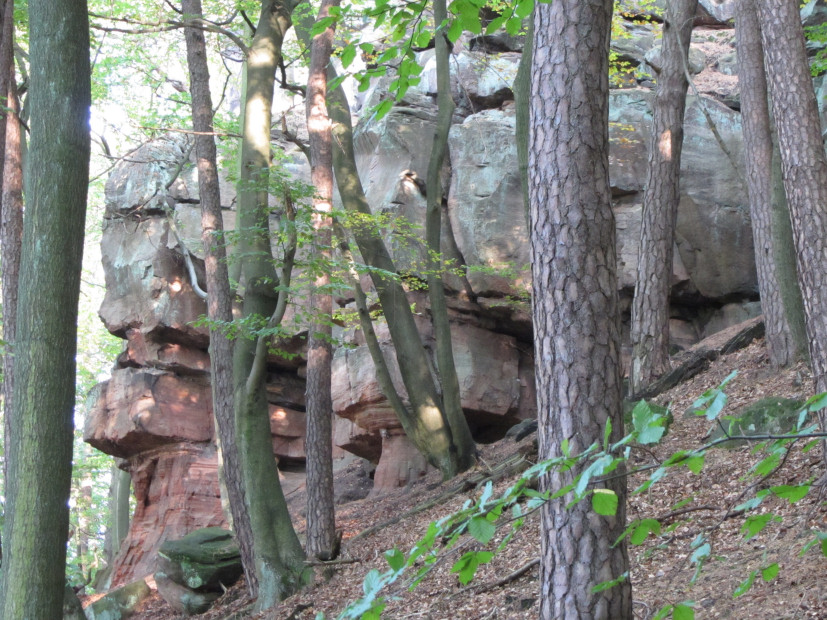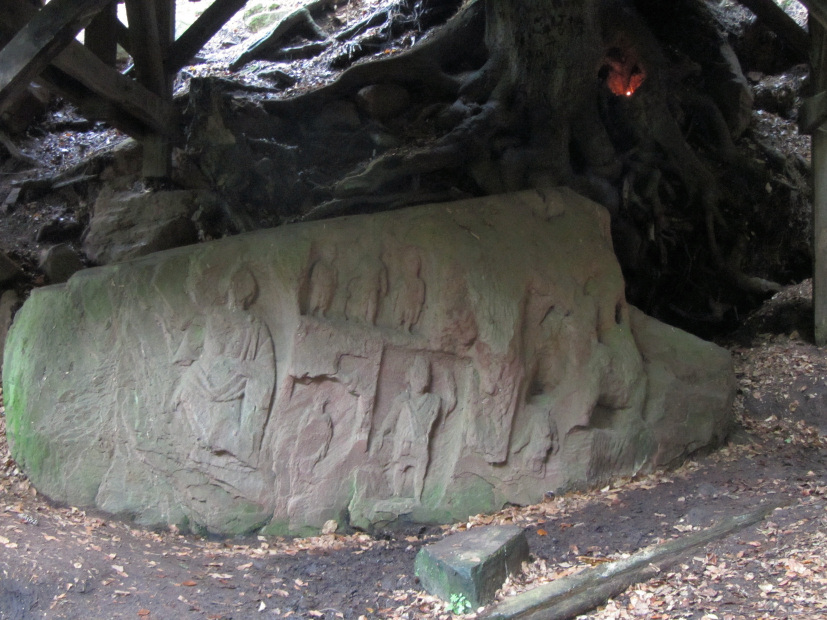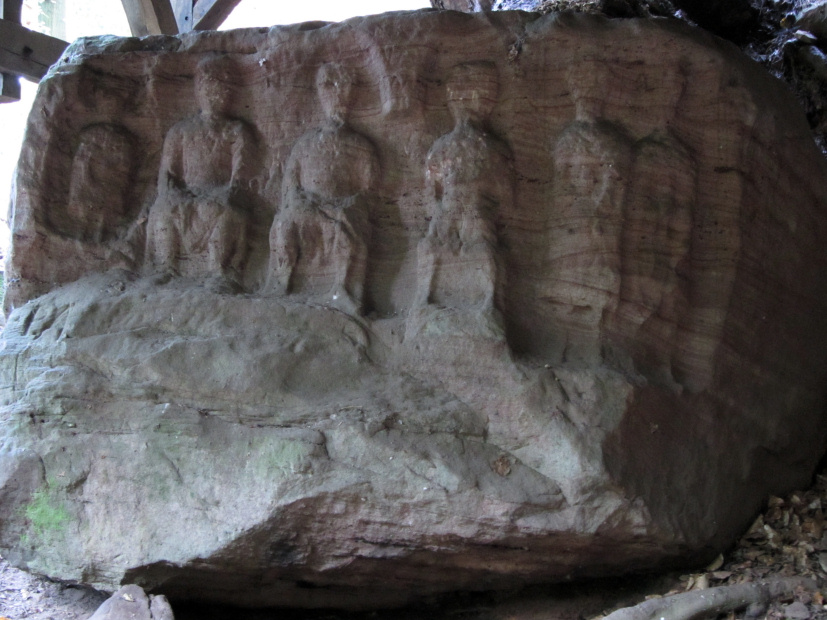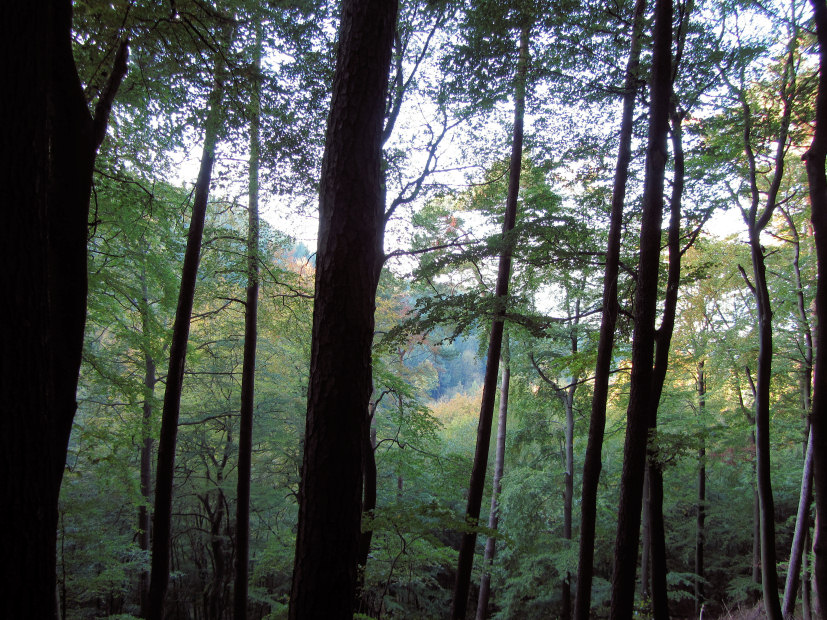
With Halloween almost upon us, Joe and I set out into the woods this weekend to hunt for remnants of Celtic Germany. Southwest of Kindsbach, we found the Heidenfelsen (Pagan Rocks): two enormous boulders carved with cryptic figures that rest beside a tiny spring. This spring was sacred to the Celts, and when the Romans came into the area, they too treated it as sacred. Offerings of Roman coins were left here up to the 4th century AD.
To reach the Heidenfelsen and their sacred spring, we walked along a leaf-covered path for about twenty minutes into the forested hills. As we came close to the spring, we saw pink sandstone crags crowning the hill a couple of hundred feet above us. They looked like a natural temple.
The path split here, going upward to pass under the crags or downhill toward what looked like a little picnic shelter. We could smell sweet, cloying incense. The two boulders rested in the shadows under the shelter, beneath the thick, twisted roots of what was once a large tree. Someone had hollowed out room in these roots to leave a flickering red votive candle.
A few inches from the right-hand side of the right-hand rock, the tiny spring flowed out. It ran along a wooden channel, arced out in a waterfall no thicker than my thumb, and flowed away downhill.

Left alone, the spring, the woods, and the hills would have felt peaceful and powerful. But the Celtic deities brought menace to the place. The Celts regularly practiced human sacrifice. These stones almost certainly witnessed torture and murder. And the three seated figures in the photo below project an air of command and impatience. They know what they want.

This is what the stone figures see from their hillside shelter between tree-root and water, between sky-temple and earth-ravine. Nothing but pristine forest. They can’t tell that the world has changed. And maybe it hasn’t.

To read my latest blog posts, please click on the “Green and Pleasant Land” logo at the top of this page. Photos taken in October, 2011, near Kindsbach, Germany. Text and photos copyright 2011 by Clare B. Dunkle.

The Celts did NOT practise human sacrifice. But the Romans certainly did. On the forum Boarii, they regularly buried a Gaulish man and woman, alive.
It’s true that much of the writing on this subject is suspect, coming as it did from the Romans, who had political reasons for portraying Celts badly. However, the archaeological evidence of ritualistic execution at Celtic sites is too widespread to leave any doubt that Celts did, in fact, practice human sacrifice. See this link for one of many examples:
http://www.archaeology.org/0201/etc/celtic.html
One could argue that the evidence at this site and at others might be of execution rather than sacrifice–perhaps these people had simply broken laws. However, that doesn’t explain the skeletons of children at Celtic sites who have been violently killed and handled in a ritualistic manner. Very few societies inflict violent capital punishment on children. In the case above, specific body parts have been carefully separated from the child’s body and moved. In other cases, children’s skeletons have been found walled up in foundations.
You’re quite right that the Romans also practiced human sacrifice; nor should it surprise us that both the Celts and the Romans would engage in this practice. The custom was widespread throughout the ancient world and doubtless seemed, at the time, perfectly normal.